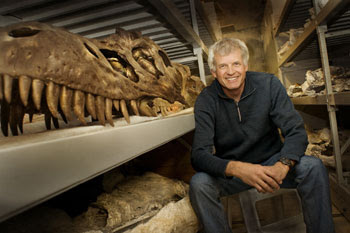
A new investigation of the skeleton of Darwinius masillae, known as ‘Ida’, confirms and strengthens earlier conclusions of the team working on the fossil.Researchers have presented several cladistic analyses reaffirming Darwinius as a haplorhine primate related to anthropoid or higher primates (monkeys and apes). The new study discusses and refutes studies by Seiffert and others (2009) in Nature, and Williams and others (2010) in Journal of Human Evolution that sought to dismiss Darwinius as a strepsirrhine primate (related to lemurs and lorises).
Darwinius is now placed within the anthropoid line of primate evolution. One of the new cladistic analyses was made by excluding fossil taxa consisting only of small fragments like single teeth or jaws. This led to a more robust result with many fewer and more strongly supported cladistic trees.
More on the research and story behind Darwinius masillae.
Thanks to Jorn for sending me the press release.












